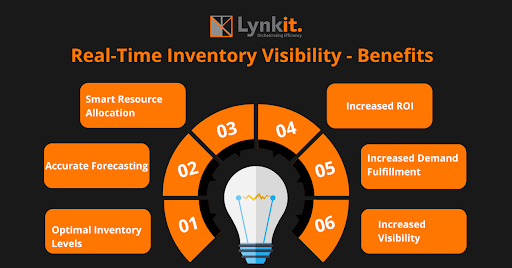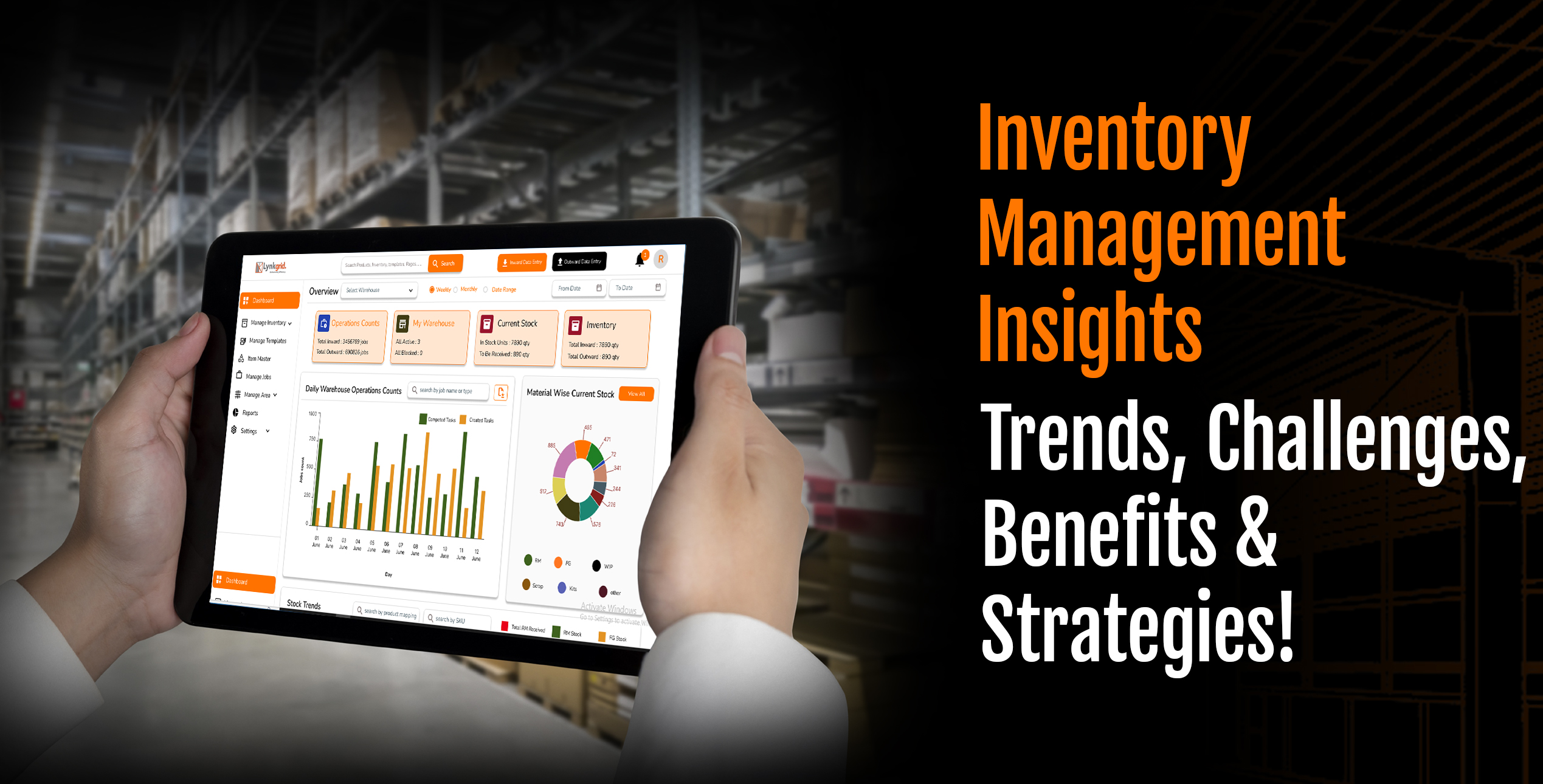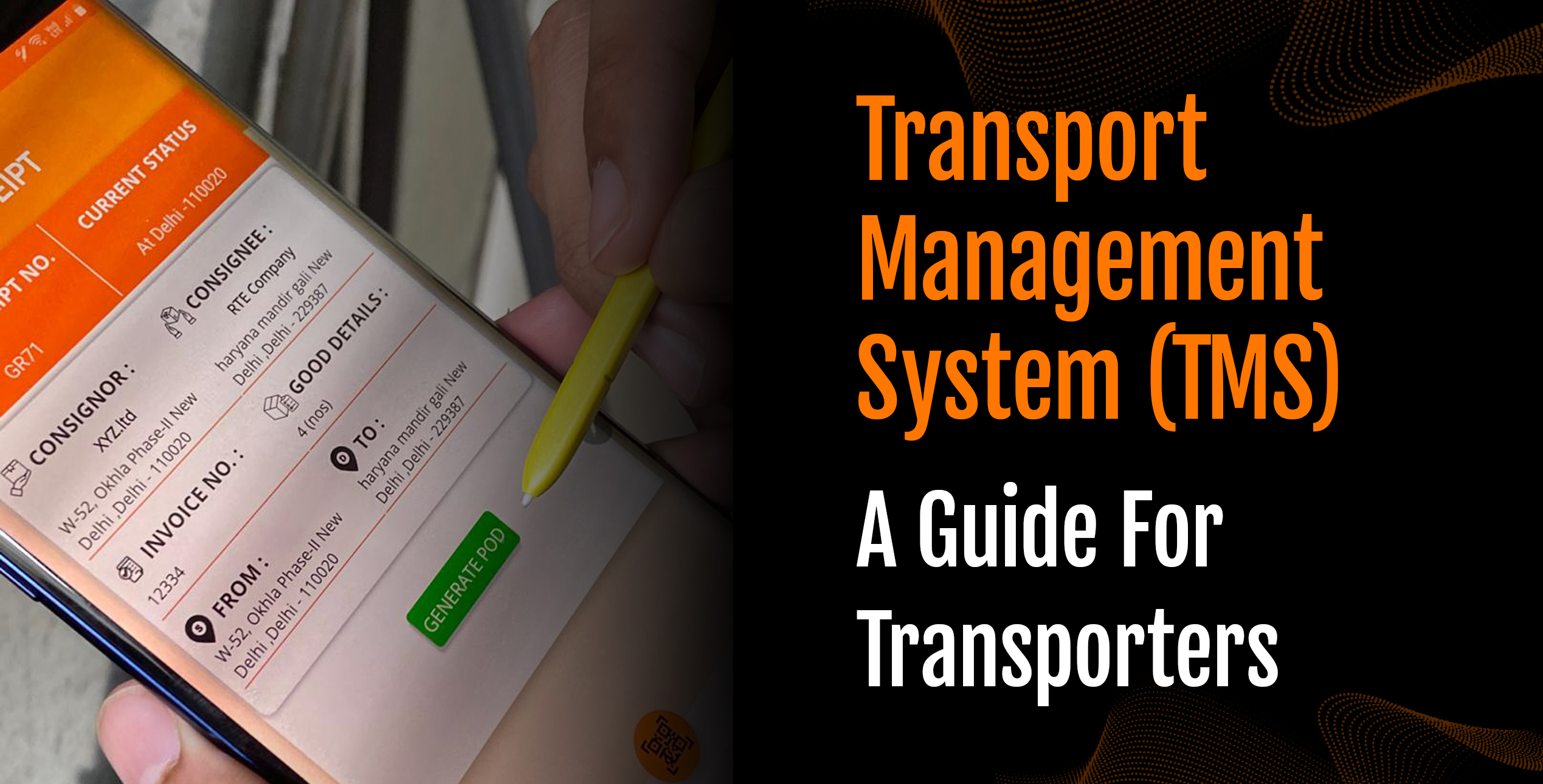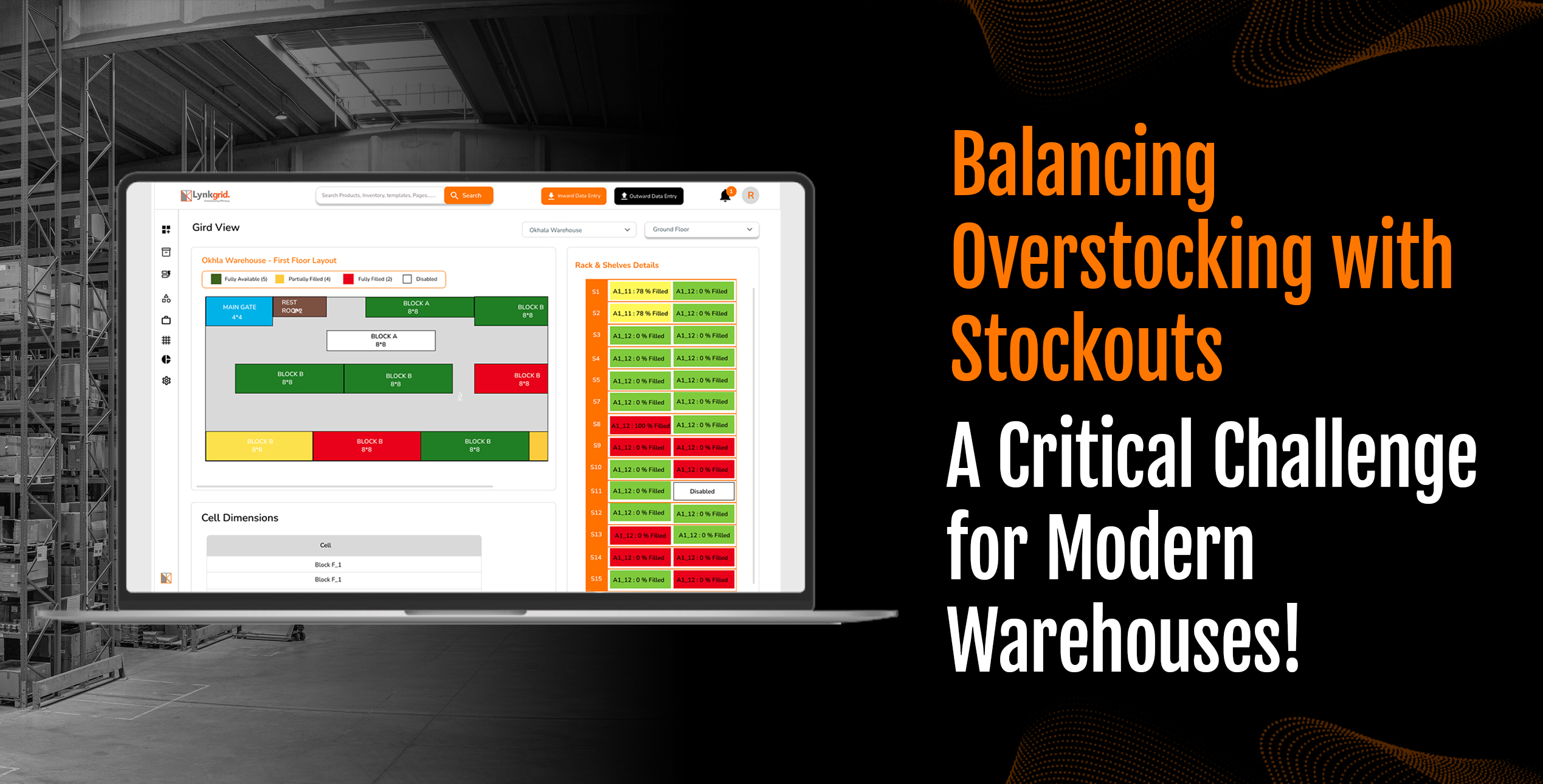Inventory visibility is critical to an organization’s success in a rapidly evolving business landscape. In 2024, understanding the latest trends and overcoming the associated challenges is more vital than ever. This article explores the key trends shaping inventory visibility, the hurdles businesses must navigate, and practical strategies to conquer these challenges. You will also learn about the transformative solutions offered by Lynkit’s Warehouse Management System (WMS) and Inventory Management solutions.
62% of business finances are affected by failures in inventory tracking – Procurement Tactics.
Inventory visibility is a significant challenge for businesses aiming to optimize their supply chain and improve operational efficiency. Inadequate visibility can lead to stockouts, overstock, increased operational costs, and reduced customer satisfaction. This article addresses these issues by examining current trends, identifying challenges, and offering practical solutions for businesses to enhance their inventory management practices.
Do you know that Lynkit’s WMS has helped our customers reduce the time spent locating their products by 95%? – Lynkit’s Knowlege Bank
Inventory Management and Visibility in 2024: Trends and Challenges
Real-Time Tracking: A Game-Changer
Real-time tracking is revolutionizing inventory visibility. Technologies such as RFID (Radio-Frequency Identification) and IoT (Internet of Things) enable businesses to monitor inventory movements instantly. This ensures accurate and timely updates, empowering enterprises to make informed decisions and enhance operational efficiency.
To achieve indoor visibility, BLE (Bluetooth Low Energy) technology with beacons on assets and stationary-mounted gateways can automatically record the movement of machinery and inventory inside the warehouse. The number of gateways used is directly proportional to the level of accuracy desired.
RFID technology can be integrated with forklifts to track real-time inventory movements by installing RFID readers and antennas. This combination allows for the automatic recording of pick-and-drop timings and warehouse locations. Additionally, GPS can be integrated into this solution if the RFID infrastructure is too costly to implement. Furthermore, using 4G gateways in certain locations can overcome the challenges of installing WiFi.
Expanding existing RFID infrastructure to include RFID gates at docks enables automatic recording of movement in and out of warehouses, thereby enhancing overall inventory visibility.
Data Analytics Revolutionizing Inventory Management Insights
The integration of robust data analytics tools transforms how businesses manage their inventory. Predictive analytics allows companies to anticipate demand patterns, optimize stock levels, and minimize the risk of stockouts. This shift from relying solely on historical data to a proactive, data-driven approach is a game-changer for inventory management.
AI and Machine Learning
Artificial Intelligence (AI) and Machine Learning (ML) are making significant strides in inventory management. These technologies enable businesses to analyze vast datasets, predict demand fluctuations, and automate inventory optimization processes. AI-driven inventory management offers unparalleled efficiency and accuracy.
Integrated Platforms for Enhanced Visibility
Integrated platforms and cloud-based solutions are gaining traction. These tools facilitate real-time information sharing among stakeholders, ensuring that every entity in the supply chain has access to accurate and up-to-date information. This improves visibility, fosters better collaboration, and enhances decision-making.
Also read: Why is a Warehouse Management System (WMS) important?
Challenges in Inventory Management and Visibility
Supply Chain Disruptions
Global supply chain disruptions, whether due to natural disasters, geopolitical events, or pandemics, pose significant challenges to inventory visibility. Businesses must adopt proactive risk management strategies to mitigate these disruptions and ensure a resilient supply chain.
Integration Hurdles in Complex Systems
Integrating various systems, such as Enterprise Resource Planning (ERP), warehouse management tools, and e-commerce platforms, can be challenging. Here, partnering with the best full-stack supply chain management software solution providers like Lynkit becomes crucial. Seamless communication between these systems is critical for a unified view of inventory. Overcoming these integration hurdles is essential for unlocking the full potential of inventory visibility.
Data Accuracy and Consistency
Maintaining accurate and consistent data across all systems is a significant challenge. Inaccurate data can lead to poor decision-making, stock discrepancies, and operational inefficiencies. Ensuring data integrity is critical for effective inventory management.
Scalability Issues
As businesses grow, their inventory management needs become more complex. Scalability issues can arise, leading to inefficiencies and challenges in maintaining visibility across the entire supply chain. Scalable solutions are necessary to support business growth and evolving inventory needs.
Strategies to Conquer Inventory Management and Visibility Challenges
Diversification of Suppliers
Businesses should diversify their supplier base to mitigate the impact of supply chain disruptions. This reduces reliance on a single source and ensures a more resilient supply chain capable of withstanding unforeseen challenges.
Investment in Robust Integration Solutions
Addressing integration challenges requires strategic investment in robust integration solutions. Businesses should adopt cutting-edge ERP systems and consider partnering with top supply chain software solutions, like Lynkit, that facilitate seamless communication between various supply chain components. This will not only enhance visibility but also improve overall operational efficiency.
Continuous Training and Skill Development
Incorporating the latest technologies for inventory visibility is only possible with a skilled workforce. Continuous training programs ensure that personnel responsible for managing inventory are well-versed in the latest technologies and can harness them to their full potential. A knowledgeable workforce is an invaluable asset in optimizing inventory visibility.
Leveraging AI and Machine Learning
Embracing AI and Machine Learning technologies can significantly enhance inventory management. AI algorithms can analyze vast datasets, predict demand fluctuations, and optimize inventory levels autonomously. Businesses integrating AI-driven solutions are better positioned to stay ahead in the competitive landscape.
Adopting Collaborative Platforms
Implementing collaborative platforms and cloud-based solutions facilitates real-time information sharing among stakeholders. This ensures that every entity in the supply chain has access to accurate and up-to-date information, improving visibility, collaboration, and decision-making.
Benefits of Enhancing Inventory Management and Visibility

Enhancing inventory visibility is not just a transformation of your supply chain. It’s empowering them. It boosts efficiency, meets customer demands, and enhances overall performance. Here are some benefits of increasing inventory visibility throughout your supply chain, putting you in control of your operations.
Enhancing Overall Efficiency
Achieving comprehensive inventory visibility across multiple channels enables businesses to leverage historical and real-time data to optimize internal processes, significantly improving supply chain efficiency. By implementing inventory management tools and apps, companies can automate inventory tracking, reducing the need for manual audits. Alternatively, partnering with a third-party logistics provider (3PL), a tech-enabled company that can provide the necessary data and visibility, can help maintain an efficient, lean supply chain at a lower cost.
Maintaining Optimal Inventory Levels
One of the most crucial aspects of inventory management is ensuring the right amount of inventory is available at all times and locations. Enhanced inventory visibility allows businesses to maintain these optimal levels across various channels, relieving the stress of tracking exact quantities and locations. This task becomes challenging without clear visibility, increasing risks such as delayed deliveries, lost inventory, and inaccurate financial records.
Improving Demand Forecasting
Better inventory visibility provides access to detailed historical order data, which enhances inventory decision-making and demand forecasting accuracy. By analyzing data such as order times (the time of day or week when orders are most likely to be placed), SKUs (stock-keeping units, unique identifiers for each distinct product and service that can be purchased), destinations (the locations where orders are shipped), and sales channels (the platforms or channels through which orders are placed), businesses can make more precise growth and trend predictions. While perfect forecasting is unattainable, increased visibility significantly improves accuracy, enhancing production lead times and operational efficiencies.
Elevating Customer Experience
Greater inventory visibility simplifies monitoring stock levels across channels, ensuring sufficient inventory to meet customer demand. Enhanced visibility enables businesses to optimize stock levels, reduce logistics costs, calculate safety stock (extra inventory held to mitigate the risk of stockouts due to uncertainties in demand or supply) to avoid stockouts, and minimize last-mile delivery by storing inventory closer to customers. These improvements lead to higher customer satisfaction and loyalty.
Enhancing Internal Communication
Inventory visibility strengthens supply chain management by providing teams with real-time data, enabling quicker and more informed decision-making. Full transparency into inventory levels and movements improves internal communication, leading to more effective coordination and responses.
Reducing Supply Chain Costs
Inefficient inventory storage, poor geographic placements, high shipping costs, and unoptimized labor can significantly inflate costs and erode margins. Comprehensive inventory visibility minimizes logistics costs, warehousing fees, and dead stock. It also helps avoid storing excess inventory in low-demand locations, leading to more cost-effective operations.
Enabling Real-Time Inventory Data
Managing inventory manually can lead to discrepancies in stock levels, especially as orders are placed and inventory changes rapidly. Real-time inventory visibility is crucial for accurate management and provides a sense of security. Inventory automation, often provided by 3PL companies, offers real-time tracking and performance insights, ensuring timely deliveries and accurate stock levels.
Increasing Order Accuracy
A lack of inventory visibility can negatively impact fulfillment processes and order accuracy rates. For instance, customers expect multiple items in an order to arrive simultaneously. Poor inventory management can lead to backorders or split shipments. Enhanced visibility ensures optimal stock levels at each location, facilitating accurate and timely order fulfillment and providing backups in other locations to prevent delays.
Lynkit’s WMS and Inventory Management Solutions
Lynkit offers advanced Warehouse Management Systems (WMS) and inventory management solutions designed to address inventory visibility challenges and optimize supply chain operations. Here are some key features and benefits of Lynkit’s solutions:
Streamlining Material Receipt
Lynkit’s WMS ensures precision in item identification with its RFID solution via QR/barcodes and implements quality control measures at arrival, ensuring adherence to set standards.
Efficient Order Processing
Efficiently manage sales orders from initiation to fulfillment, ensuring accurate processing, order allocation, and alignment with inventory availability for timely customer delivery and enhanced satisfaction.
AI-Based Inventory Holding and Management
Leverage AI-driven inventory holding and management to optimize stock levels, predict demand fluctuations, and enhance operational efficiency.
Video Analytics for Inventory Management and Worker Safety
Utilize video analytics for accurate inventory management and to ensure worker safety within the warehouse.
Enhancing Worker Productivity
Lynkit’s WMS enhances worker productivity by streamlining warehouse operations and providing real-time data for efficient decision-making.
Wrapping Up
Navigating the complexities of inventory visibility in 2024 is a strategic imperative for businesses. By embracing technological advancements, adopting proactive strategies, and investing in skilled personnel, companies can overcome challenges and ensure seamless inventory tracking and management.
Lynkit’s advanced WMS and inventory management solutions provide the tools and insights to optimize supply chain operations and achieve a competitive edge. Contact us today to discover how our solutions can transform your inventory management practices.
FAQs
What is the significance of real-time tracking in inventory visibility?
Real-time tracking, facilitated by technologies like RFID and IoT, ensures instantaneous updates on stock movements, enhancing accuracy and enabling businesses to make informed decisions promptly.
How can businesses address supply chain disruptions affecting inventory visibility?
Businesses can mitigate the impact of supply chain disruptions by adopting a proactive strategy of diversifying their supplier base, minimizing the risk of relying on a single source.
What role does data analytics play in revolutionizing inventory insights?
Data analytics tools, particularly predictive analytics, transform how businesses manage their inventory by anticipating demand patterns, optimizing stock levels, and minimizing the risk of stockouts.
How can integration hurdles in complex systems be overcome for improved inventory visibility?
Overcoming integration challenges requires a strategic investment in robust solutions such as Lynkit, facilitating seamless communication between various supply chain components.
Why is continuous training and skill development crucial for successful inventory management?
Continuous training ensures that the personnel responsible for managing inventory are well-versed in the latest technologies. This maximizes their ability to harness advanced tools and contributes to optimal inventory visibility.
How can AI and Machine Learning enhance inventory management?
AI and Machine Learning can analyze vast datasets, predict demand fluctuations, and automate inventory optimization processes, offering unparalleled efficiency and accuracy in inventory management.
What features does Lynkit’s WMS offer to enhance inventory management?
Lynkit’s WMS offers AI-based inventory holding and management, video analytics for inventory management and worker safety, temperature and humidity monitoring, and enhanced worker productivity.
How can businesses ensure data accuracy and consistency in inventory management?
Maintaining accurate and consistent data across all systems requires robust data management practices, regular audits, and advanced data integration solutions.
Why is scalability important for inventory management solutions?
Scalability is crucial for supporting business growth and evolving inventory needs. It ensures that inventory management solutions can handle increased complexity and volume as the business expands.





